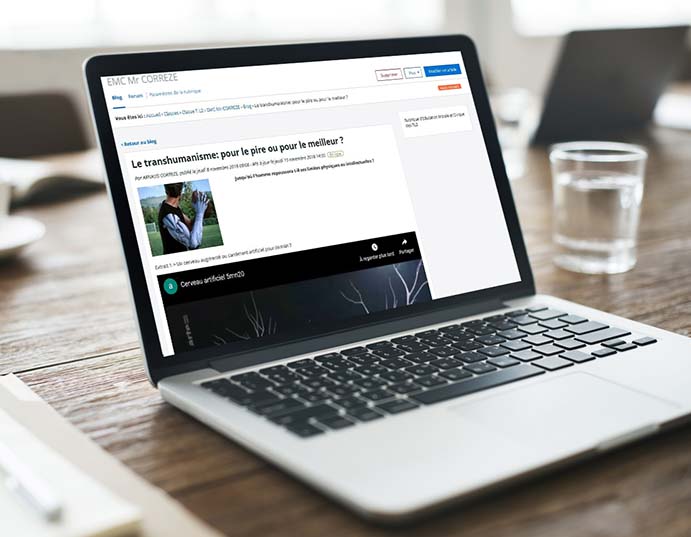Flipped classes: how do you establish this practice with the Skolengo teaching binder?
[Testimony]
Arnaud Corrèze, certified geography and history teacher in the Louis Majorelle de Toul high-school, EMS administrator and Lycée 4.0 assistant considers the Skolengo EMS as a very rich teaching tool, especially the binder and the sections. It allows you to establish innovative practices such as flipped classes.
The MBN EMS (Skolengo solution) offers serious potential for establishing dynamic, interactive teaching.
New innovative practices with Skolengo such as flipped classes

For the student, Skolengo allows them to achieve a real gain in autonomy in knowledge learning, training in a more dynamic form, greater confidence building for the student, more adapted and individualized assistance from the teacher the possibility for them to have support from their friends (group working), possibility to work at their own rhythm without being hassled by a single timing, something that is stressing for the most fragile students. It favors development of innovative teaching practices such as flipped classes.
For the teacher, it is a change of perspective. Vertical, uniform transmission of knowledge is shifted to a horizontal transmission where the teacher individually assists, targets difficulties, helps and stimulates. At the end of the class, the teacher has a finer, individualized “mapping” of skills acquired or not.
Experimentation with a flipped class in the framework of a debate in moral and civic education (EMC)
Arnaud Corrèze, geography and history teacher, has a quite large bank of personal resources that he feeds permanently (articles, videos, TV recordings, etc.).
At this time, he uses the blog and the forum in the class space section for moral and civic education classes and history and geography classes in semi-guided year 11.
"Very simply, I produced an article on an EMC debate with one or two short videos, one or two articles of my choice, like the following example:
- The students discover the sequence at the beginning of the lesson on the blog
- For about 2025 minutes; they read the documents individually and can react on the forum that I created in parallel
- For the other halfhour, they discuss the subject orally
- Finally, if there is time left, everyone goes into the forum and writes their opinion there or does it for the next time. This forum can be used at the start of the next class"
I do more and more flipped classes using the sections. The design is quite fast and I can easily copy or move an article from the blog to another course class. In addition, the storage space quota is unlimited in the sections.


